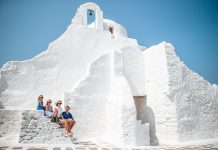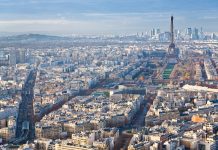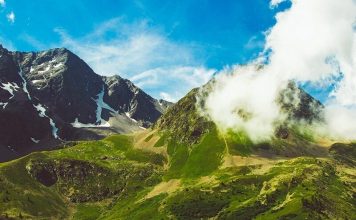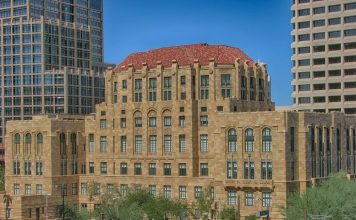Salamanca is a city in the Castile and León region of Spain. It is the capital and most populated municipality of the province of Salamanca. Salamanca is famous for its rich historical and cultural heritage, as well as its natural beauty and gastronomy.
What is Salamanca Known For?
Salamanca has over 2,000 years of history, and has been the seat of the University of Salamanca, the oldest university in Spain and one of the oldest in Europe. Salamanca has a majestic cathedral, a fortified royal palace in the city centre, monumental remains of the Roman Salmantica, Renaissance-style palace houses, unique treasures of the work of Fray Luis de León, emblems of modern architecture and one of the most diverse and vibrant festivals in Spain.
Salamanca is also famous for its location by the Tormes river and its tributaries, the Águeda and the Alagón, which provide scenic views and recreational opportunities. Salamanca is surrounded by natural parks, such as the Arribes del Duero, the Sierra de Francia and the Sierra de Gredos, where visitors can enjoy hiking, biking, fishing and other outdoor activities.
Salamanca is also famous for its cuisine, which reflects its rural past and its geographical diversity. Salamanca offers a variety of dishes, such as hornazo (meat pie), chanfaina (lamb stew), farinato (sausage with flour and spices) and amarguillos (almond cookies). Salamanca is also known for its wines, especially those from the Arribes del Duero and Sierra de Salamanca denominations of origin.
Famous Drinks in Salamanca
One of the most famous drinks in Salamanca is the licor de bellota, a liqueur made from acorns. Acorns are abundant in Salamanca, as they are the main food source for the Iberian pigs that produce the famous jamón ibérico (Iberian ham). Licor de bellota is a smooth and aromatic drink that can be enjoyed as an aperitif or a digestif.
Another famous drink in Salamanca is the limonada, a drink made from wine, lemon juice, sugar and cinnamon. Limonada is usually sweet and refreshing, and can be served with ice. It is often accompanied by torrijas (bread pudding) or rosquillas (doughnuts). Limonada is a popular drink during Easter and Christmas.
Salamanca also has a variety of beers to offer, both local and international. Some of the local breweries are La Loca Juana, La Malquerida and La Viriato, which produce craft beers with different styles and flavours. Some of the international beers that can be found in Salamanca are Guinness, Paulaner and Heineken.
Famous Sports in Salamanca
One of the most popular sports in Salamanca is football (soccer), as in most parts of Spain. The city has several football teams, such as UD Salamanca, which plays in the third division of the Spanish league, and CF Salmantino UDS, which plays in the fourth division. Football fans in Salamanca also support Real Madrid or Barcelona, the two biggest clubs in Spain.
Another sport that has a long tradition in Salamanca is bullfighting. The city has a bullring called Plaza de Toros de la Glorieta, which was built in 1893 and can seat up to 10,000 spectators. Bullfights are held during the Feria de Salamanca (Salamanca Fair), which takes place in September. Bullfighting is a controversial sport that attracts both supporters and critics.
Salamanca also hosts several sporting events throughout the year, such as marathons, triathlons, cycling races and golf tournaments. Some of these events are:
- The Media Maratón de Salamanca: A 21-kilometer race that takes place in October along the riverbank and the historic centre.
- The Triatlón de Salamanca: A triathlon that takes place in July and consists of swimming 1.5 km, cycling 40 km and running 10 km.
- The Vuelta Ciclista a Castilla y León: A cycling race that takes place in April and covers 700 km through various towns and cities.
- The Open de España de Golf: A golf tournament that takes place in June at various golf courses.
Famous Streets in Salamanca
One of the most famous streets in Salamanca is Calle Compañía (or Calle Mayor), which connects Plaza Mayor with Plaza de Anaya. It is a pedestrian street that offers a variety of shops, cafes, restaurants and bars. It is also where some of the main monuments of Salamanca are located, such as the Casa de las Conchas, the Clerecía and the University.
Another famous street in Salamanca is Calle Rúa Mayor, which runs through the old town and forms part of the old city wall. It is a narrow street that has many historical buildings, such as the Cathedral, the Casa de las Muertes and the Casa de la Sal. It is also where some of the most traditional shops and restaurants are located.
A third famous street in Salamanca is Avenida de Mirat, which leads to the entrance of the Parque de los Jesuitas, a large park in the city centre. It is a wide avenue that has many modern buildings, such as the Palacio de Monterrey, the Teatro Liceo and the Museo Art Nouveau y Art Déco. It is also where some of the most exclusive shops and boutiques are situated.
FAQs about Salamanca
- What is the best time to visit Salamanca?
The best time to visit Salamanca depends on your preferences and interests. If you want to enjoy the pleasant weather and avoid the crowds, spring (March-May) and autumn (September-November) are ideal seasons. If you want to experience the festive atmosphere and cultural events, summer (June-August) and winter (December-February) are also good options.
- How to get to Salamanca?
Salamanca is well connected by road, rail and air. You can drive to Salamanca from Madrid (220 km), Valladolid (120 km) or Cáceres (200 km) via highways A-6 or A-66. You can also take a train from Madrid (2.5 hours), Valladolid (1 hour) or Cáceres (2 hours) via Renfe or AVE. You can also fly to Salamanca Airport (15 km) or Madrid-Barajas Airport (220 km) and then take a bus or a taxi to Salamanca.
- What are some of the must-see attractions in Salamanca?
Some of the must-see attractions in Salamanca are:
- The University of Salamanca: A 13th-century university that is one of the oldest and most prestigious in Europe. It has a magnificent facade, a library, a chapel and a museum.
- The Plaza Mayor: A square that was built in the 18th century and is considered one of the most beautiful in Spain. It has a porticoed perimeter, a town hall and a statue of Miguel de Cervantes.
- The Casa de las Conchas: A house that was built in the 15th century and is decorated with over 300 shells, symbolizing the Order of Santiago. It has a courtyard, a tower and a library.
- The Cathedral: A complex that consists of two cathedrals, one Romanesque and one Gothic. It has a tower, a cloister and a museum.
- The Casa Lis: A house that was built in the 19th century and is an example of Art Nouveau architecture. It houses a museum that exhibits works by Lalique, Tiffany and Gaudí.
See more Famous Places in Spain:
- What is Seville Famous For?
- What is Cadiz Famous For?
- What is Huelva Famous For?
- What is Caceres Famous For?
- What is Granada Famous For?
- What is Madrid Famous For?
- What is Barcelona Famous For?
- What is Valencia Famous For?
- What is Almeria Famous For?
- What is San Sebastian Famous For?
- What is Santanter Famous For?
- What is Salamanca Famous For?
- What is Oviedo Famous For?
- What is Valladolid Famous For?
- What is Cordoba Famous For?
- What is Alicante Famous For?
- What is Bilbao Famous For?
- What is Palma Famous For?
- What is Murcia Famous For?
- What is Zaragoza Famous For?













